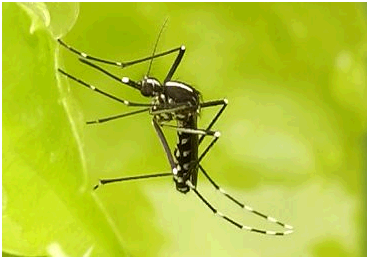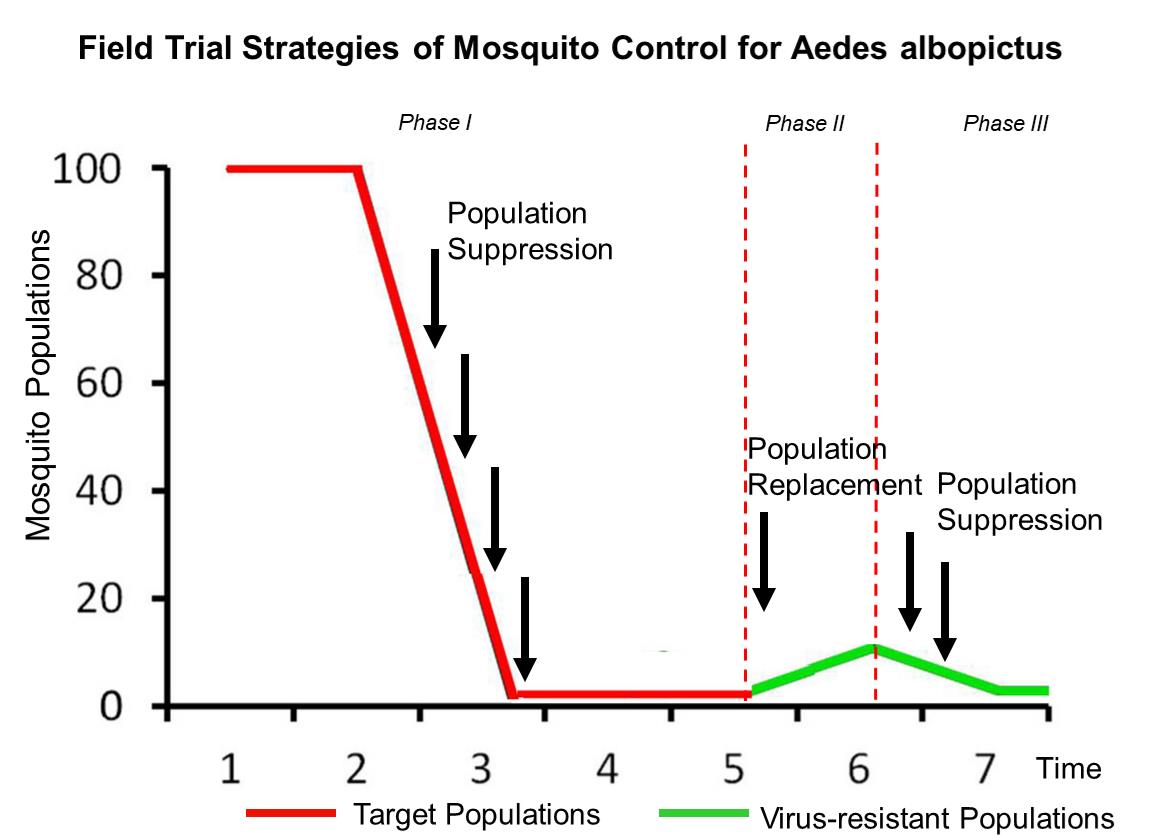Aedes albopictus is a medium-sized black mosquito with several white stripes formed by scales. Male mosquitoes neither bite nor transmit diseases but females do. Aedes albopictus and Aedes aegypti are capable of transmitting several viral diseases including yellow fever, dengue and Zika. Based on the reports from WHO, approximately 3.9 billion people are suffering the risks of dengue in the worldwide. Every year there is around 390 million people are infected with dengue and around 500 thousand people have severe symptoms with a death rate of 2.5%. Since May 2015, Zika virus has continued to spread in the Americas. Pregnant women who are infected with Zika virus have a potential of having a new born infant with microcephaly. Until now, around 47 countries and regions have reported the local emergence of Zika and all the continents in the world have reported the inputs of Zika cases.

Since traditional approaches (vaccine, drug and chemical insecticide) are not sufficient in disease control, significant efforts have been put to develop novel tools to combat mosquito-borne diseases. During the past decade, Wolbachia has developed into one of the most promising novel vector control tools.
Aedes albopictus naturally carries Wolbachia infection. By adding another Wolbachia strain or replacing the native strains with a novel strain, Wolbachia can be utilized as a tool to either suppress Aedes albopictus population below the epidemic threshold or directly block virus transmission between human and mosquito, based on Wolbachia-induced cytoplasmic incompatibility (CI) and virus blocking (Zheng, et al. 2019. Nature).

Note:
(1) Population suppression is based on releases of Wolbachia-infected males capable of inducing CI when they mate with the uninfected females or females carrying a different Wolbachia strain, resulting in egg death.
(2) Population replacement is similar to the action of "vaccine" which prevents viral replication and transmission in mosquitoes. Since Wolbachia-infected females can produce infected offspring after mating with both infected and uninfected males, whereas uninfected females can reproduce only if they mate with uninfected males. This facilitates the invasion and spread of Wolbachia into uninfected populations, resulting in establishing a virus-resistant population.








 Location:
Location:







